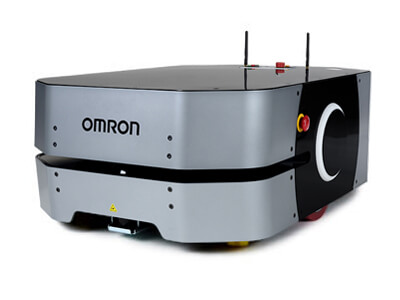The rapid advancement of technology in recent years has paved the way for transformative changes across various industries. One notable trend that has garnered significant attention is the development of autonomous mobile robots (AMRs).

These robots, equipped with advanced sensors, artificial intelligence, and sophisticated algorithms, have the potential to revolutionize multiple sectors, from manufacturing and logistics to healthcare and entertainment.
As we stand at the brink of a new era, it is crucial to explore whether autonomous mobile robots are indeed the future and the implications they may have on society.
What are Autonomous Mobile Robots?
Autonomous mobile robots refer to software-driven devices that utilize built-in sensors, processors, and algorithms to independently transport objects without relying on physical guides or external markers. These robots are regarded as intelligent since they have the capability to perceive their surroundings, analyze data, and respond to people, vehicles, and various items within their surroundings.
AMRs have already proved themselves to be very innovative solutions in the supply chain, bringing considerable benefits due to their ability to:
- Improve speed and accuracy of routine operations, particularly in warehousing and manufacturing.
- Boost efficiency by collaborating alongside human workers.
- Reduce the risk of employee injury in dangerous environments.
Applications Across Industries
- Manufacturing and Logistics: Autonomous mobile robots have already made a significant impact in industries like manufacturing and logistics. They can navigate factory floors, warehouses, and distribution centres to transport goods, manage inventory, and even assist in assembly processes. This enhances operational efficiency, reduces human error, and increases overall productivity.
- Healthcare: In healthcare settings, these robots are being used to transport medication and supplies, disinfect hospital rooms, and assist with surgery. The precision and reliability of these machines can potentially minimize the risk of infections and errors, ultimately improving patient outcomes.
- Retail: Retailers are exploring the use of AMRs for tasks like restocking shelves, assisting customers, and even providing security. These robots can enhance the shopping experience by offering real-time information and personalized recommendations.
- Agriculture: In agriculture, autonomous mobile robots can perform tasks such as planting, harvesting, and monitoring crops. This has the potential to address labour shortages, increase yield, and reduce the need for harmful pesticides.
- Delivery and Last-Mile Logistics: Companies have started experimenting with AMRs for package delivery, especially in urban areas. These robots can navigate through traffic, sidewalks, and pedestrian zones, potentially revolutionizing the last-mile delivery process.
Future Prospects
The global Autonomous Mobile Robots (AMR) market was valued at US$ 1.5 billion (10.1 billion DKK) in 2022 and is anticipated to reach US$ 7.9 billion (53.4 billion DKK) by 2029.
The demand for autonomous mobile robots (AMRs) is on the rise due to their expanding usage in various industries and increasing public awareness of their benefits. They excel in performing repetitive tasks, handling materials, and moving goods in manufacturing, logistics, and warehousing, reducing the reliance on physical labour and improving operational efficiency.
The integration of sensors and software allows mobile robots to understand and respond to their surroundings using data from 3D cameras, laser scanners, gyroscopes, accelerometers, and wheel encoders.
Labor shortages and rising labour costs have led to increased adoption of AMRs as they automate processes that traditionally required human intervention, addressing these challenges and reducing operational expenses.
With the growth of e-commerce, the demand for efficient logistics and fulfilment operations has surged. AMRs are proficient in tasks like order picking, sorting, and inventory management in warehouses and distribution centres. It is these abilities that are driving their adoption.
The flexibility of AMRs in terms of coding and reprogramming for changing tasks or workflows makes them adaptable across various applications and industries. The capability to expand and deploy multiple robots to meet evolving business needs is a key driver of their development. Furthermore, the global pandemic highlighted that industries relying heavily on complex supply chains are vulnerable to major crises.
The heavy dependence on a single source, such as China, exposed how easily global trade systems can break down, leading to the shutdown of factories and production.

In conclusion, the need for advanced technology has become unmistakable. This is precisely where the significance of Autonomous Mobile Robots (AMRs) shines through.
These robots can work alongside human employees in warehouses, efficiently and accurately picking products. They offer a way to ensure that businesses can continue functioning even during challenging times.
They can effectively decrease labour expenses, enhance productivity in a safe coexistence with humans, and curtail costly incidents of incorrect picks and packaging mistakes.

